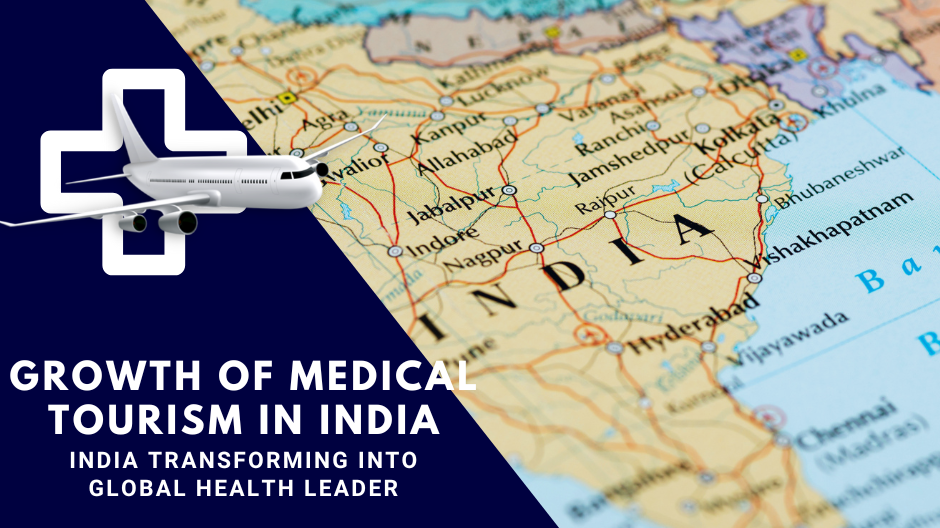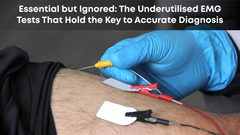Growth of Medical Tourism in India | India transforming into global health leader
India has been at the forefront of innovation and technology since time immemorial. From the arts to culture, architecture, medicine, and technology—there is hardly any field in which India does not excel—or has not excelled to date. In fact, areas of modern surgery such as Rhinoplasty have roots in the ancient Indian medical system that can be traced back to 800 BCE.
The golden age of Indian medicine witnessed the writing of noted medical practitioners such as Charak and Sushruta, which helped India become a regional hub for innovation in medicine from 800 BCE to 1000 CE. Today, India boasts of a sizeable public-private healthcare system that caters to this nation of a billion people—and to the 2 million patients that visit India from around the world, making it a top destination for medical tourism—a $10b industry today.
What is medical tourism?
Medical tourism is a global multi-billion-dollar phenomenon where individuals interested in health services move abroad to get these services cost-effectively—but with the same quality as in their home country. As healthcare costs surge in the US and other developed nations, people who cannot afford them flock to countries such as India, where treatment costs can be much lower than those back home. Medical tourism also caters to patients who cannot get treatment in their home country due to waiting periods and the unavailability of those services at short notice.
Why is India the medical tourism hub of the world?
India serves as a medical tourism hub for both developed and emerging economies. It offers world-class medical facilities for those requiring quality diagnostics, cosmetic surgery, dentistry, organ transplantation, cardiac surgery, CyberKnife (Oncology), Artificial Transplants (Cardiology) and orthopaedic surgery and other specialised medical services. With over 38 JCI—accredited hospitals, India has a well-developed medical tourism industry that can serve every need of its patients.
To put things into perspective, cardiac procedures such as bypass surgeries cost $100,000 in the US or £60,000 in the UK costs just $5,000—a fraction of the cost in India. With over 697,453 medical tourists visiting India in 2019 alone, India caters to over 6.5% of the global medical tourism market, which is growing at a CAGR of 19% annually.
How is India serving the world with global benchmarks
India ranks 10th in the Medical Tourism Index 2020-21. Additionally, India ranks 12th out of 20 global wellness tourism destinations, has 38 JCI (Joint Commission International) accredited, and 650 NABH (National Accreditation Board for Hospitals and Healthcare Providers) accredited hospitals. The government of India has started a new class of visas for medical tourists, helping them to travel to India for healthcare. The government of India has established a $640m fund to enhance 12 service sectors—with medical and health tourism being one of them. The Heal in India initiative is helping thousands of medical tourists access world-class medical facilities in India every year.
What are the top treatments sought by medical tourists in India
Medical tourists commonly visit India for world-class wellness and surgical facilities that include:
- >Orthopaedic Surgeries such as hip and knee replacement
- >Cardiology and Cardiothoracic surgeries such as bypass and heart transplant
- >Cosmetic and Plastic Surgeries such as face, breast and body contouring
- >Dental Services, including implants, dental surgeries, and whitening services
- >Bariatric and Obesity
- >Cancer and Oncology
- >Ophthalmology surgeries such as Vitreo Retinal Surgery LASIK and cataract
- >Neurosurgery
- >Bone Marrow Transplants
- >Nephrology and Kidney Transplants
With a cost advantage of up to 80% compared to developed countries, India is fast emerging as a hub for all surgery types worldwide.
JCI in India
JCI—or Joint Commission International, is a premier international body that strives to continuously improve the safety and quality of care internationally through education, advisory services, international accreditation and certification. India has over 38 internationally recognized hospitals serving thousands of patients annually.
Public and private medical tourism efforts in India
The Government of India—through its Heal in India initiative, has helped dozens of hospitals rise to meet international standards. Additionally, India’s new medical visa subclass helps patients worldwide access high-quality healthcare without bureaucratic hurdles. Private hospitals such as Fortis, Max Healthcare, Medanta and the Apollo group strive to constantly exceed international standards and provide both domestic and international patients with quality care that meets or exceeds world standards.
Innovation by medical device manufacturers in India
India’s engineering prowess helps it stay at the forefront of high technology. When it comes to medical device manufacturers, even more so. Indian medical device manufacturers have long helped to build high-quality medical devices for point-of-care and home use.
Established medical device manufacturers such as Clarity Medical in Mohali have helped hospitals worldwide access high-quality diagnostic devices such as modular patient monitors, EMG machines, SpO2 monitors, critical care monitoring devices and telemetry solutions. Clarity Medical designs and manufactures medical diagnostic solutions with advanced patient care technology and OT-ICU grade remote patient monitoring devices.
Clarity’s understanding of the problems faced by doctors with diagnostics in critical care solutions has helped them engineer highly accurate medical devices in India. Clarity’s SpO2 monitors consistently outperform top international devices, and their remote patient diagnosis and telemetry solutions are helping the world combat infectious diseases such as COVID-19 better.
Final Thoughts
As medical treatment costs rise globally, India is quickly gearing up to become the top healing destination in the world. Armed with a significant push by the Indian government, medical tourism in India is growing by leaps and bounds and shows no signs of slowing down. Additionally, India’s homegrown medical and diagnostic device manufacturing industry is helping the world diagnose and treat patients better.












